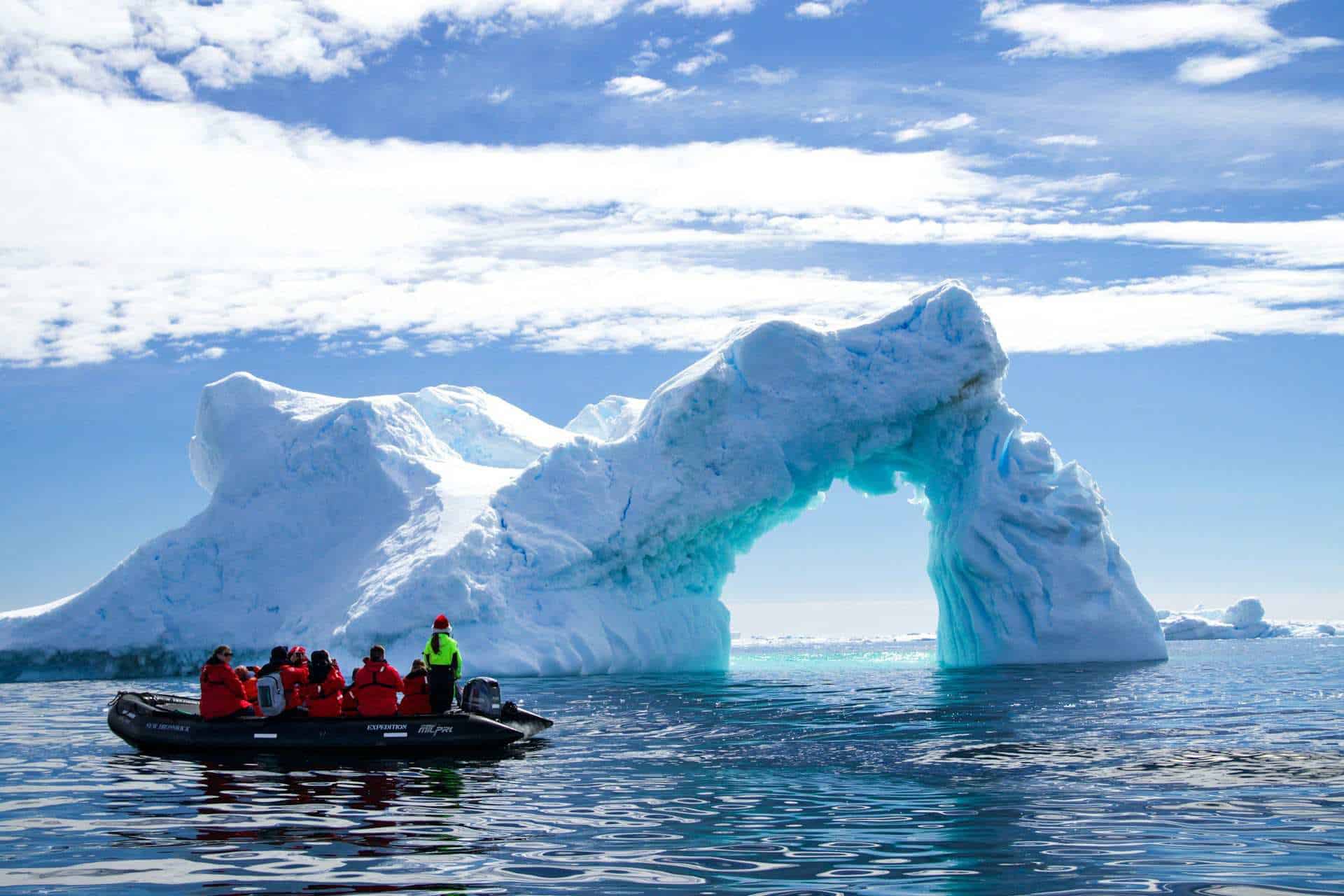
Is it safe to travel to Antarctica? Our guide outlines all the necessary safety tips to remember for your journey to the end of the Earth!
When planning a journey to the White Continent, the question of safety in Antarctica naturally comes to mind.
So, is it safe to travel to Antarctica, a continent notorious for its harsh environment, remote location, and intensely cold weather?
This icy wilderness is arguably the most dangerous place on the planet. Yet, despite the extreme conditions, Antarctica offers a one-of-a-kind, magical trip.
Not only is the Antarctic terrain breathtaking, but its wildlife is also unlike any you would find in other parts of the world.
Picture a colony of king penguins hanging around the vast sea ice or a leopard seal stalking its prey in the frigid waters. You might even catch a glimpse of the massive humpback whale.
True, exploring Antarctica comes with its own risks and may not be for the faint of heart.
But with detailed planning, the proper gear, and the help of a trusted tour operator, visiting Antarctica can be the best and safest adventure that intrepid travelers will ever experience.
This comprehensive guide delves into the risks, precautions, and realities of visiting Antarctica to help you plan the perfect trip.
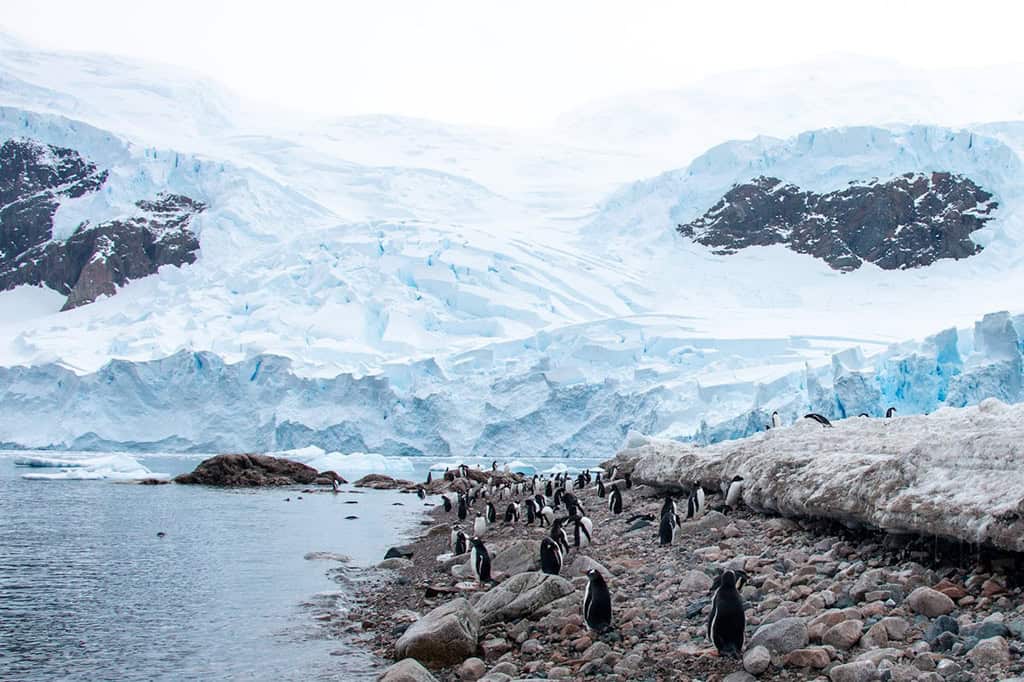 Visit Antarctica and see the amazing penguin colonies up close!
Visit Antarctica and see the amazing penguin colonies up close!
What to Expect for Safety in Antarctica
While visiting Antarctica can be inherently dangerous, you can sidestep these risks with precaution and preparation. That’s why it’s key to understand what to expect on your trip to the frozen continent.
From decoding the unpredictable weather to picking a reputable tour operator, here are our best safety tips.
Planning your trip to Antarctica? Read our Antarctica Trip Cost – Ultimate Guide
Choosing a Tour Operator for Antarctica
We know that Antarctica is safe to travel. But is Antarctica safe to travel as an independent tourist? Can you visit the continent without expedition guides?
Even if you obtained the necessary permits from the Antarctic Treaty, DIYing a trip to Antarctica as a casual traveler is very expensive and potentially dangerous. So it’s not the wisest thing to do.
Antarctica doesn’t have commercial flights, hotels, or stores. So, without a tour company or an Antarctic cruise, you would have to charter your private ship, bring your provisions, and find a place to stay, which is nearly impossible.
Worse, in case of accidents, you’re responsible for rescuing yourself.
That’s why booking a tour operator is compulsory when visiting Antarctica. They will provide everything you need, from getting permits to preparing meals.
Be sure to pick the right operator. They must be registered with the International Association of Antarctica Tour Operators (IAATO) and have a comprehensive emergency evacuation plan.
Crossing the Drake Passage
There’s a misconception that getting to Antarctica is frighteningly complicated. While it’s not easy, it’s not particularly hard either. The continent, after all, has become more accessible to tourists in recent years.
Perhaps the most intimidating aspect of traveling to Antarctica is sailing across the tumultuous Drake Passage.
The Drake Passage is infamous for being dangerous, mainly because of its strong winds, powerful currents, and huge waves. Plus, there’s no land nearby.
So, we can’t blame people for asking the question: is Antarctica safe to travel to? But there’s nothing to worry about.
All modern-day expedition ships can withstand the Drake Passage and the rough seas of the Southern Ocean. They also have state-of-the-art weather tracking systems run by an expert expedition team.
Additionally, the Drake Passage is typically calm during the Antarctic summer months of October to February. In most cases, the only discomfort tourists experience is seasickness.
Most tourists travel to Antarctica by cruise ship from Ushuaia, Argentina, the southernmost city in South America.
If you want to skip traveling through the Drake Passage, fly to Punta Arenas, Chile, and then sail to King George Island. Another option is to board an Antarctic cruise ship from New Zealand’s South Island or set sail from Hobart, Tasmania in Australia.
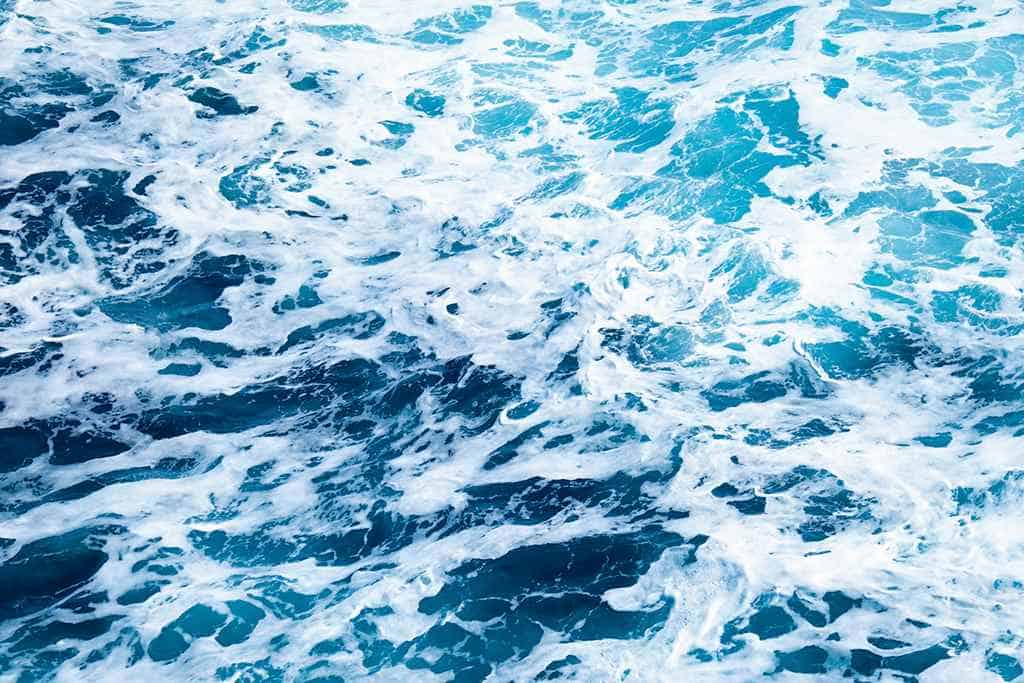 Modern expedition ships are built to handle the Drake Passage.
Modern expedition ships are built to handle the Drake Passage.
Extreme Weather Conditions
The White Continent has harsh and unpredictable weather, with strong winds and temperatures that could drop below −43 °C. Even at the height of the summer months, daily temperatures hover between -2°C and 8°C.
Rest assured, there won’t be any severe blizzards during the Antarctic summer, which is the only season tourists can visit. Still, the cold can be dangerous.
Be sure to stay warm by wearing the proper clothing, such as a windproof jacket, waterproof pants, and insulated boots. We also recommend you bring a dry bag to store your valuables during shore landings.
You can check with your tour operator about what essentials to bring. They often provide a complete packing list to ensure you’re safe, well-prepared, and comfortable on your trip.
The weather and rough seas can also affect your schedule. Expect possible last-minute changes to your itinerary.
The remoteness of Antarctica
As one of the most secluded places on Earth, Antarctica seems cut off from the rest of the world.
Don’t expect cafes or restaurants. Neither are there hospitals or clinics, though there are medical facilities at some research stations.
While communications in Antarctica have slightly improved over the years, phone service and Wi-Fi access are still severely limited. Often, these are only available at research stations.
However, your tour operator has access to communication devices that they could use in an emergency. You may even be able to connect to the internet onboard your cruise ship, but only for light usage.
Read more about the Best Antarctica Cruise – Ultimate Guide to Who & How
The Wildlife
Antarctica may have a few marine predators, but it has no natural land predators that might suddenly pounce on unknowing tourists. And no, polar bears don’t live in Antarctica.
Antarctica’s wildlife is captivating. Mostly covered in ice, the continent is a habitat for penguins, seals, whales, and various species of seabirds.
Are the animals in Antarctica safe to approach?
The animals usually don’t pose any danger to humans. But still, it’s crucial to keep a safe distance when observing them. Follow the rules set by your expedition team not just for your safety but also for the well-being of the animals.
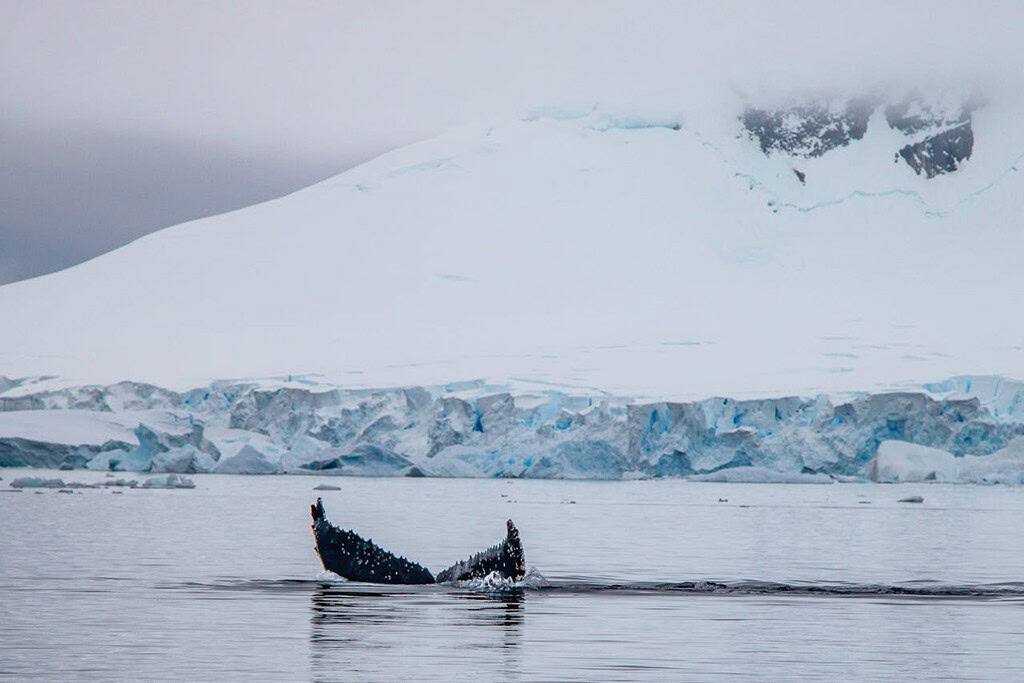 Antarctica’s wildlife is truly incredible!
Antarctica’s wildlife is truly incredible!
The Antarctic Landscape
Antarctica is a pristine wilderness of glistening ice sheets punctuated by towering glaciers, jagged mountains, and massive ice shelves that extend into the Southern Ocean.
Although dramatically beautiful, the Antarctic terrain can be treacherous. Among its hazards are crevasses hidden under the snow, slippery ice, and unstable ground. These can make navigation and other activities dangerous.
Ice and snow create a reflected glare, which can irritate the eyes or impair vision. In worse cases, it can lead to snow blindness, wherein too much UV light damages the cornea of the eye.
To avoid untoward incidents, always follow the guidance and instructions of the cruise or expedition staff. The experts are there to keep you safe! Use footwear with good traction for safe passage and to prevent slips on icy surfaces.
Getting ready for your Antarctica trip? Here are the Best Antarctica Books To Read Before Your Trip
Antarctic Cruise vs. Expedition
Your overall experience in Antarctica may vary depending on whether you pick a traditional cruise or an expedition.
In a nutshell, Antarctica cruises cater to tourists looking for a more comfortable trip, while expeditions are ideal for adventure seekers.
An Antarctic cruise focuses mainly on sightseeing and sailing along the coastline, with minimal shore landings. It prioritizes relaxation and typically has a fixed itinerary, such as visits to the famous South Georgia Island.
On the other hand, an Antarctic expedition highlights exploration of the continent, with activities like hiking, kayaking, camping, snowshoeing, and zodiac excursions. Expeditions also have smaller ships, fewer guests, and a more flexible schedule depending on the weather.
So, what does this have to do with your safety in Antarctica?
Expeditions require more physical and mental preparation than a traditional cruise.
Do you prefer the more demanding activities of an expedition? Or do you want a more laid-back trip, enjoying lovely views from the safety of your deck? Whichever you choose, both offer safe and life-changing experiences to travelers.
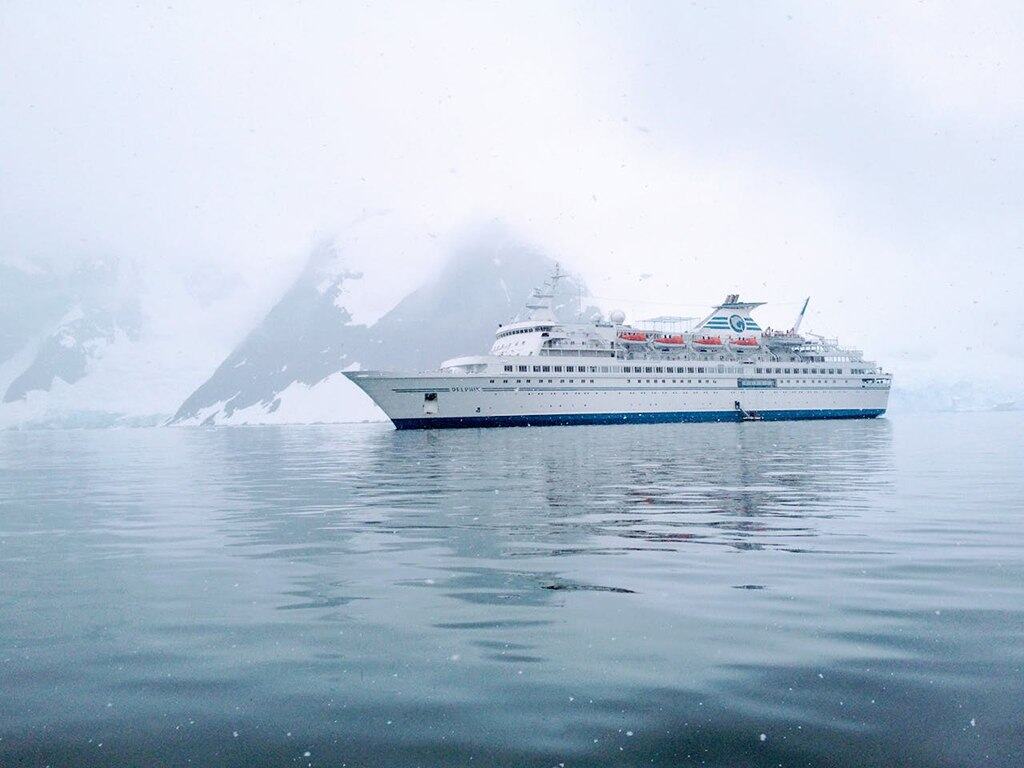 Cruises or expeditions are two amazing ways to explore the wonders of Antarctica.
Cruises or expeditions are two amazing ways to explore the wonders of Antarctica.
Responsible Tourism
Antarctica harbors a delicate ecosystem which needs protection from human activity, including tourism.
For this reason, the Antarctic Treaty, presently signed by 58 nations, requires all tourists to obtain a permit to visit Antarctica.
The vast majority of tour operators process the permit for their guests. You don’t have to apply for it unless you’re traveling independently.
The permit lists what you can do, where you can go, and how to treat the wildlife. It regulates tourism and minimizes human impact on the environment.
By strictly following these guidelines, you help preserve Antarctica’s unique but fragile flora and fauna while ensuring your safety.
In addition, refrain from taking natural objects as souvenirs. Don’t litter or deface historical sites, monuments, and research facilities.
Please note that visiting any part of Antarctica as a tourist without a permit is illegal and could result in fines or imprisonment.
On a side note, you don’t need a visa to visit Antarctica because no one nation owns it. But, depending on your country of origin, you may need a visa to enter transit countries, such as Argentina, New Zealand, and Australia.
Read more about visiting Antarctica as a responsible tourist.
General Safety Tips in Antarctica
Antarctica may be one of the most stunning places on the planet, but it’s also inhospitable and unforgiving. Safety is crucial for a successful and unforgettable trip. That said, here are simple tips to keep in mind when visiting Antarctica:
Travel with a Reputable Tour Operator
Tour operators make your trip safer and more enjoyable. They also ensure travelers comply with the rules for protecting Antarctica’s ecosystem.
A reliable tour operator has expert guides, appropriate safety equipment, and efficient emergency protocols.
Check out our guide to choosing the best Antarctica cruise!
Get Travel Insurance
Travel insurance is essential when visiting Antarctica. Be sure to pick one that covers medical evacuations and health insurance.
Though the continent is generally safe, its extreme isolation and erratic weather make it difficult to access in an emergency.
Besides, having travel insurance gives you peace of mind, allowing you to enjoy your trip to the fullest.
Important Note! Before you book any international trip, we honestly recommend getting travel insurance. You never know when things will go wrong, and medical bills can add up quickly if you get sick or injure yourself overseas.
Our personal recommendation based on our own experience is World Nomads.
Health Safety
Antarctica’s harsh climate and extreme cold can worsen existing health conditions. Medical assistance and emergency services are often inaccessible in Antarctica.
For this reason, you must undergo medical screening and get clearance from your healthcare provider before traveling.
Tour operators will require this medical clearance.
Stock up on your prescription medication if you’re taking any. Be sure you have enough for the entire duration of your trip, plus an extra supply to cover four weeks.
Physical Preparation
We recommend you engage in physical activities that improve your stamina and balance before exploring Antarctica. These exercises help you keep up when walking on uneven terrain and icy ground.
Tourists joining specific excursions, such as climbing or skiing, may be asked to present a certificate of training proving their skillset. The expedition may require additional training before allowing the guest to participate in an activity.
In addition:
- Drink plenty of fluids to stay hydrated. The cold, dry air can dehydrate you quickly.
- Eat well, especially energy-rich foods, to maintain stamina and keep warm.
- Immediately inform the expedition staff, the guides, or the medics if you feel unwell.
- Know your capabilities and physical limits. Avoid strenuous activities if you’re untrained or uncertain if your body can handle the strain.
- Maintain good hygiene. Wash your hands to help prevent the spread of germs.
Read our What to Wear in Antarctica – Ultimate Travel Packing List
Dress Appropriately
Your worst enemy in Antarctica is the cold, which can lead to hypothermia, dehydration, trench foot, frostbite, tooth pain, snow blindness, and even altitude sickness.
Protect yourself from these hazards by keeping warm and toasty with the proper clothing.
When dressing for extreme conditions, layering is key. Wear thermal underwear as the base layer, polyester or fleece as the middle layer, and a weatherproof jacket and snow pants as the outer layer.
Invest in high-quality footwear. Insulated, waterproof boots with excellent grip are ideal for walking on ice-covered terrain.
Protect your extremities from the wind and cold with gloves, a warm hat or beanie that covers your ears, wool socks, and a scarf or neck gaiter.
And just because Antarctica is cold doesn’t mean you can’t get sunburned. Apply liberal amounts of waterproof, sweat-proof sunscreen with at least SPF 45.
Don’t forget the lip balm to prevent your lips from chapping.
Also, wear polarized sunglasses or goggles outdoors to protect your eyes from reflected glare.
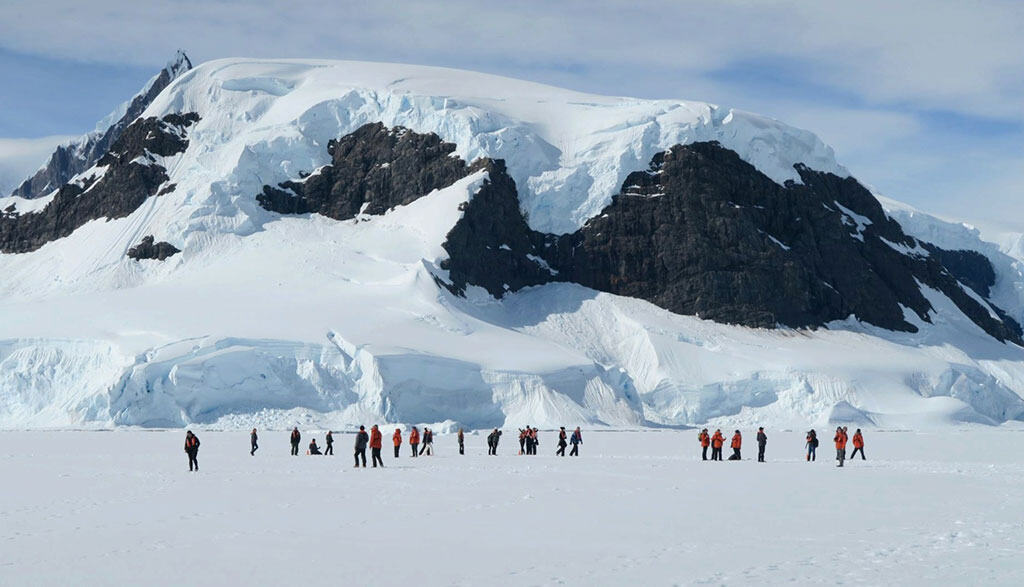 Staying warm in Antarctica starts with the right gear!
Staying warm in Antarctica starts with the right gear!
Be Prepared for Emergency
Accidents and emergencies are unlikely to happen as long as you go by the rules and policies set by the cruise crew members or expedition team.
Even so, you should familiarize yourself with the safety protocols of your cruise or expedition. These include knowing the evacuation plan in case of an emergency.
It would also help to know the location of first-aid kits and emergency communication equipment.
Navigating the Terrain
Guides know best when it comes to exploring Antarctica, so take their lead and always follow their instructions.
Listen to safety briefings and note which areas are a no-go.
Never stray from the group or wander off marked routes. Cracks, crevasses, and deep holes might lie hidden beneath the snow.
Be extra cautious of slippery surfaces and uneven ground. A trekking pole may help you keep your balance and avoid a fall.
If you want to walk on glaciers or snowfields, you should have the proper gear and training.
Don’t get too close to glaciers or spots with overhanging ice, which can cave in unpredictably.
Read more: 17 Awesome Things to Do in Antarctica
Protecting Yourself from Scams
The Antarctic Treaty strictly regulates tourism in Antarctica, so scams are uncommon but do happen.
Of course, Antarctica doesn’t have taxi scams or vendors selling overpriced fake souvenirs. Scamming, if it happens, will likely occur during your pre-travel preparations.
In February 2024, a fake travel agency duped a dozen doctors from Kolkata, India, into paying for a sham trip to Antarctica.
In a different case, scammers in Italy sold fake passports to 700 people, promising them citizenship of a made-up country in Antarctica.
To avoid falling victim to a scam, do thorough research, read reviews, look for hidden charges, and only book through trusted agencies. Be wary of sketchy travel websites offering too-good-to-be-true deals.
Booking your Antarctica trip with a tour operator will lower the chance of being scammed. But be sure to pick a legit company accredited with the International Association of Antarctica Tour Operators (IAATO).
Solo Travel in Antarctica
Yes, you can visit Antarctica as a solo traveler. And it’s safe.
But unlike your other solo travels, you can’t explore Antarctica alone, as doing so is unsafe and irresponsible. You have to join an organized expedition or an Antarctic cruise.
Solo traveling to Antarctica is a fantastic way to meet new people. If you’re uncomfortable with big crowds, opt for an expedition, as it has fewer guests than a cruise.
Many expedition ships offer solo cabins for those who want privacy. Some waive the single supplement fee or the extra charge solo guests pay to stay in a room alone.
If you don’t mind some company, there are same-sex cabins you can share with other solo travelers.
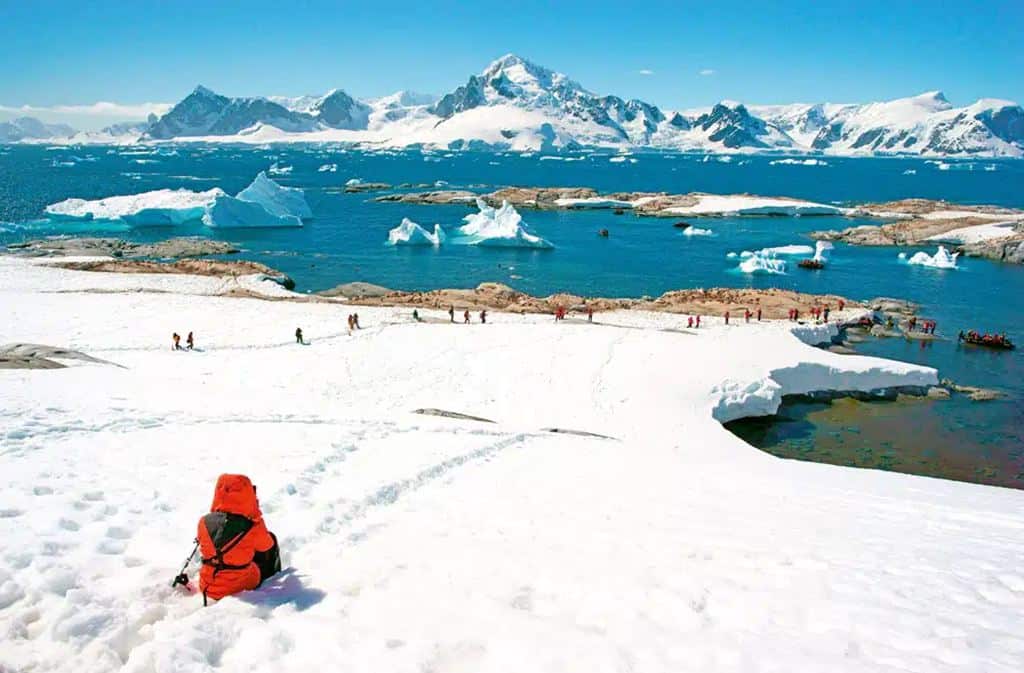 It’s possible to travel solo in Antarctica and even team up with fellow solo adventurers.
It’s possible to travel solo in Antarctica and even team up with fellow solo adventurers.
So is it safe to travel to Antarctica?
Because you can only visit Antarctica with a registered tour operator and explore with expert guides, it’s actually a very safe place to travel!
Antarctica does pose numerous risks. It is the most remote and treacherous continent on earth, after all. But this makes the island highly regulated, and you’ll never be navigating this icy landmass alone.
You will always have trained and knowledgeable tour guides helping you along the way. Just heed their advice and take extra care to prepare for such an adventurous trip.
But with proper planning, adherence to rules, responsible tourism, and the help of a trusted tour operator, you’re sure to have a very safe and utterly memorable trip.
Safe travels!
Read next: Antarctica Photos That Will Inspire Your Next Adventure
DISCLAIMER: Some of the links in this article are affiliate links, which means if you book accommodation, tours or buy a product, we will receive a small commission at no extra cost to you. These commissions help us keep creating more free travel content to help people plan their holidays and adventures. We only recommend the best accommodations, tours and products that ourselves or our fantastic editorial team have personally experienced, and regularly review these. Thanks for your support, kind friend!
Please visit:
Our Sponsor
